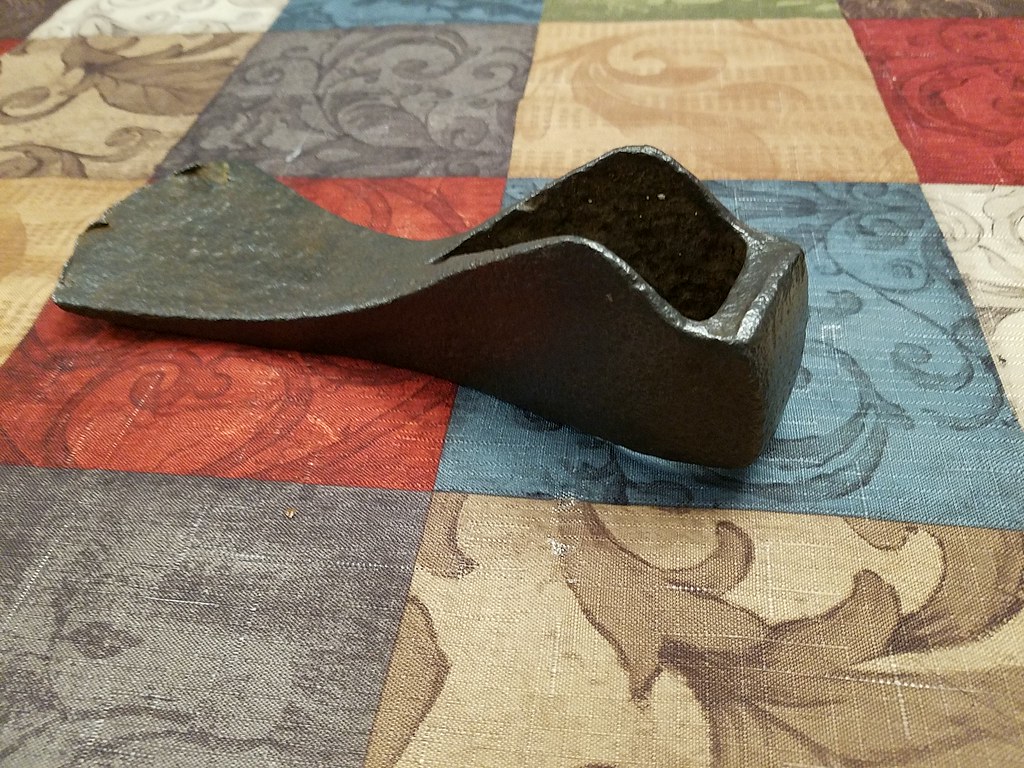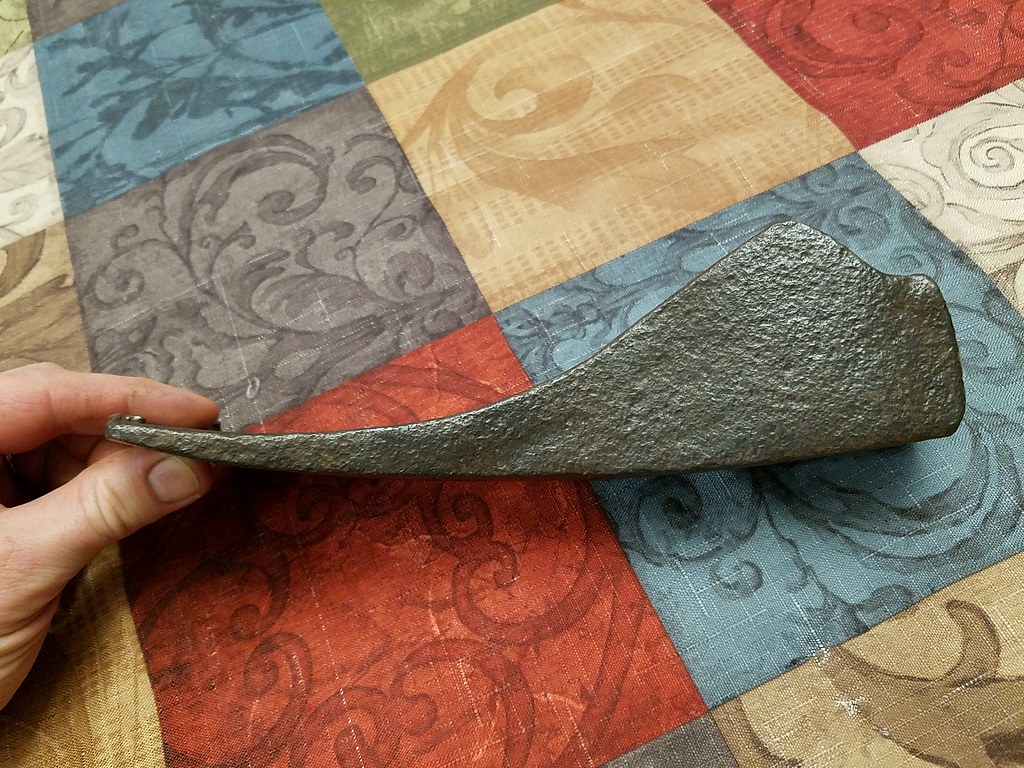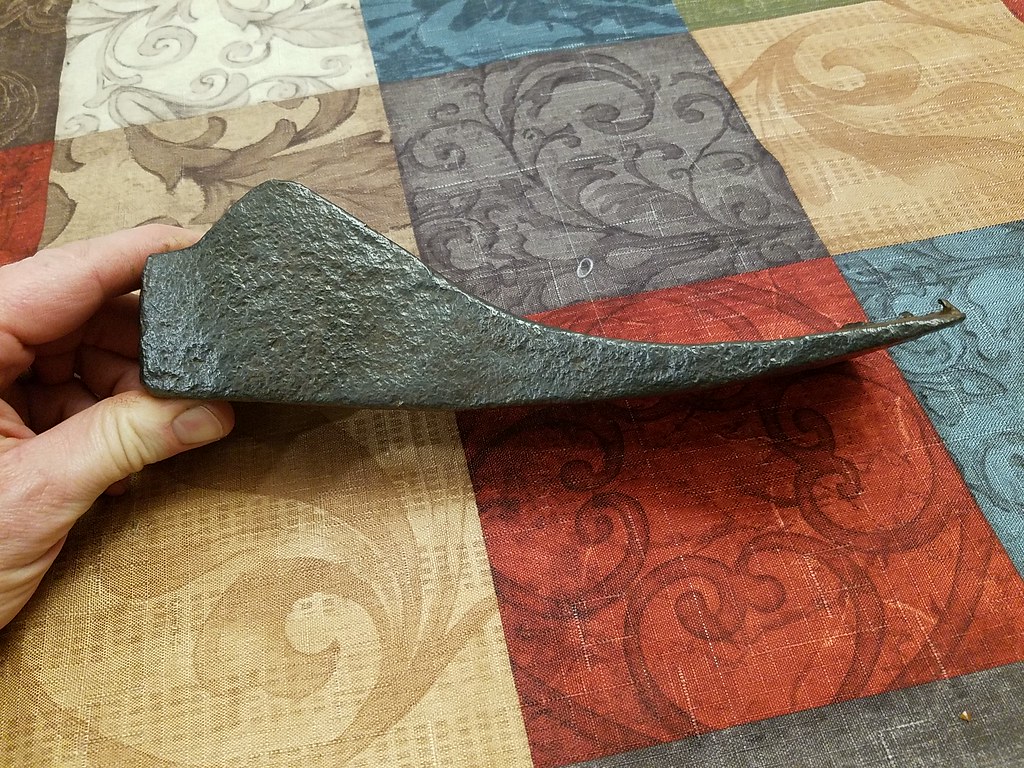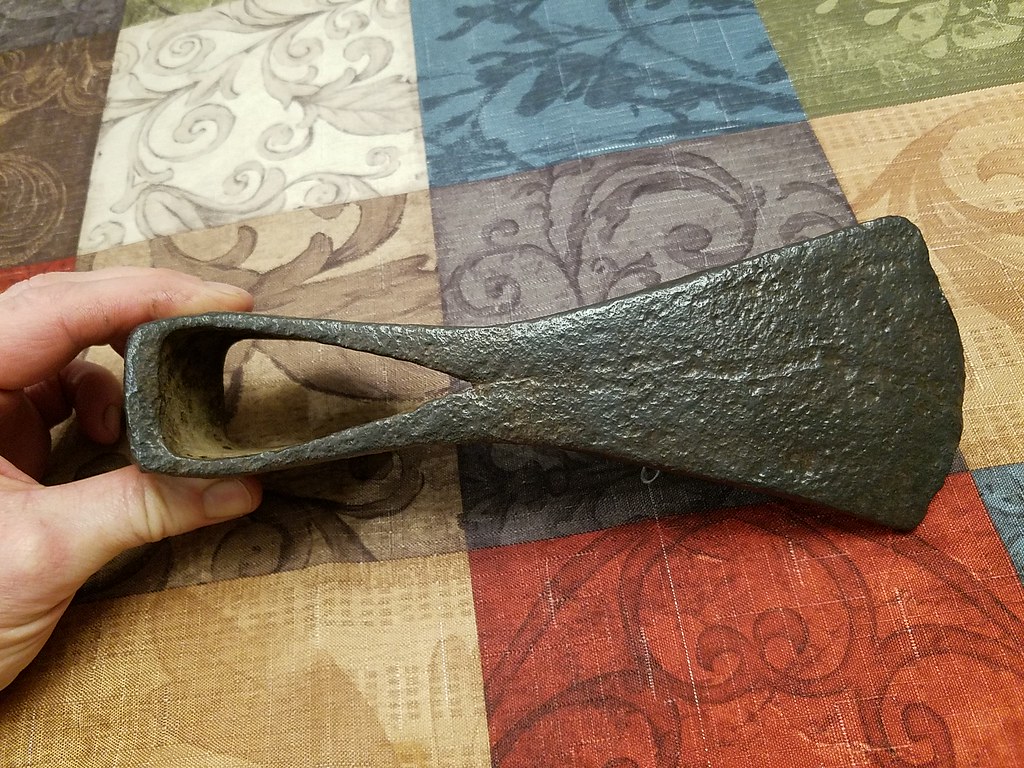- Joined
- Nov 14, 2017
- Messages
- 762
You can see hammer marks around the bevels on the sides of the bit. I think it’s hand forged. Would I be right in this assumption?
That's a sweet broad axe there. Probably a forge welded hardened poll.
Those look like the same style of stamps and the same random placement. I bet yours is a Douglas too.

It could have started with a pre-form shaped like this.

The inner dashed lines represent the poll. The lugs are drawn up as you suggest. The outer dashed lines indicate the start of forge welded section. After welding this section would be drawn out flat.
I have to preface this by admitting that I'm not familiar with early forging work. I don't doubt there's a simpler way than I just described. I'd like to hear more about the way you think this was created.
 IMG_20180309_232048 by Justin Lyttle, on Flickr
IMG_20180309_232048 by Justin Lyttle, on Flickr IMG_20180309_232040 by Justin Lyttle, on Flickr
IMG_20180309_232040 by Justin Lyttle, on Flickr IMG_20180309_232055 by Justin Lyttle, on Flickr
IMG_20180309_232055 by Justin Lyttle, on Flickr IMG_20180309_232105 by Justin Lyttle, on Flickr
IMG_20180309_232105 by Justin Lyttle, on Flickr IMG_20180309_232059 by Justin Lyttle, on Flickr
IMG_20180309_232059 by Justin Lyttle, on FlickrMast axe.. is that a pattern or it was used for making masts for ships?

i heard somewhere that it was double beveled so that, in a pinch you could make a new mast but that's not very realisticIt's a pattern that was used for hewing masts for ships as well as other tasks. Because it's double beveled you could fell, juggle and hew your mast with this single axe, though it usually would have been used in conjunction with other axes.
The handle was typically upturned to get your hands away from the work and prevent 'barking your knuckles'.


IMG_20180309_232105 by Justin Lyttle, on Flickr
Who can say? It looks like it could be very old, and who knows it's journey? I bought that lot from a barn digger in RI along with several other rusty old things hidden away for decades. It was stashed with those newer (But still old) adzes so some forgotten collector/picker gathered them. I wonder what that head's story was before that? It would go way back. But with no markings and no one to ask, it's a mystery.Oh,wow,JB,that is a pretty iconic shape for Norse tools...Not something seen all that often.
http://warehamforgeblog.blogspot.com/2008/07/using-source-norse-ship-tools.html, Plate 26,examples from the Mastermyr tool find,Copenhagen museum...
Ironically,(and in spite of what i said),eyes on those very old examples were punched.But Very traditional ...The maker most definitely had some ties to the Old Country....
Among the modern makers this style is reflected in the work of Svante Djarv,(Sweden)among others,http://www.woodsmithexperience.co.uk/shop/product/svante-djarv-small-adze-600g/...
But what you have there seems older...A product of some country forge in Scandinavia?Work of a descendant?...Dunno...
You got it from a barn digger, who got it from a picker/collector; the incredible mobility of old tools too in that scene makes identifying it also not easier.It would go way back. But with no markings and no one to ask, it's a mystery.
Work of a descendant?...
Yes. Where I am in the northeastern United States, we have the oldest parts of the country with the highest population density and the largest concentration of old industry and trade work. Although this location may be looked at with jealousy by my picker brothers from other regionsYou got it from a barn digger, who got it from a picker/collector; the incredible mobility of old tools too in that scene makes identifying it also not easier.
i heard somewhere that it was double beveled so that, in a pinch you could make a new mast but that's not very realistic
i heard somewhere that it was double beveled so that, in a pinch you could make a new mast but that's not very realistic
Suppose your demasted schooner has been dry humping the beach for a couple weeks. You look out past the beach and see tall straight pines. Onboard you have 20 healthy young sailors who miss their girlfriends back home, a few axes, and some highly skilled riggers. What do you suppose would happen?







